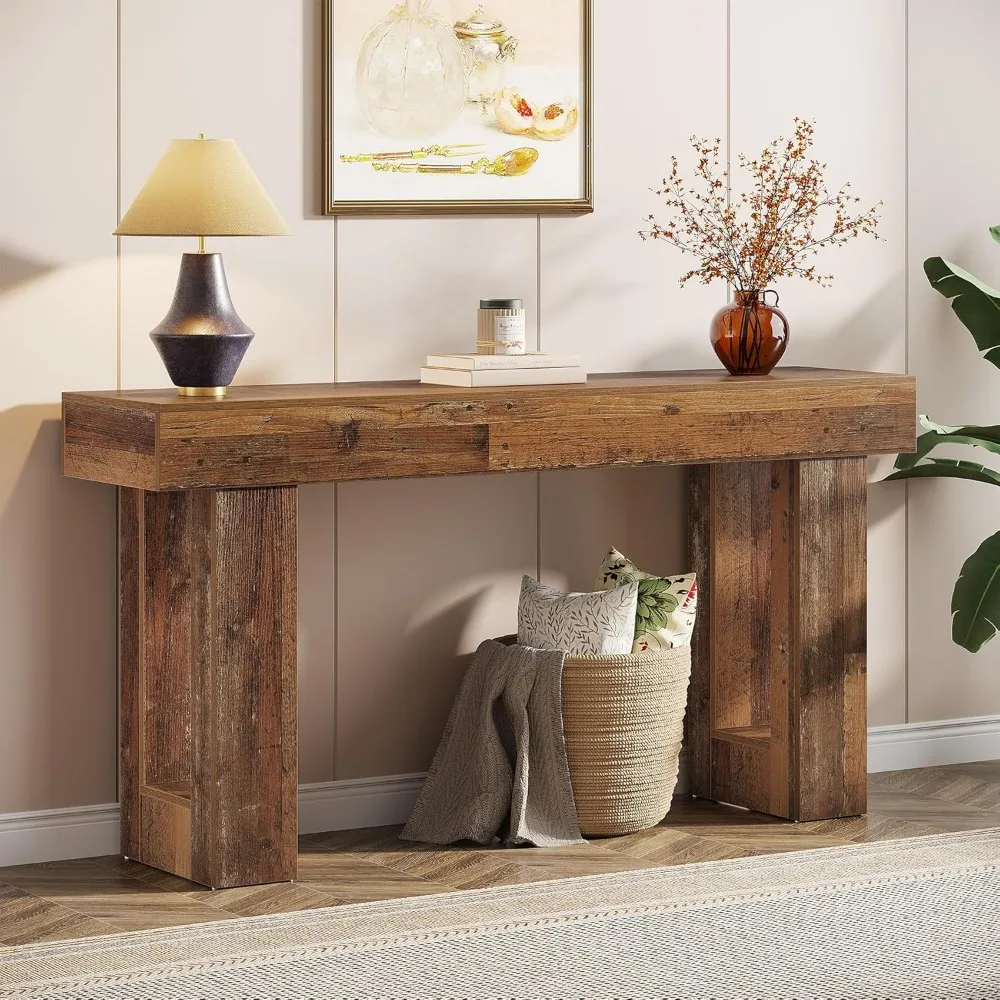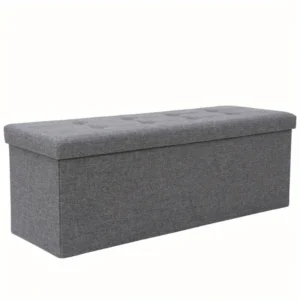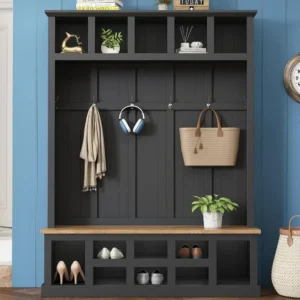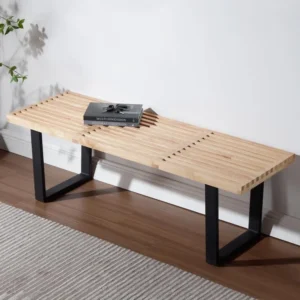Introduction: The Entryway Statement
The entryway is more than just the threshold to your home—it’s the first impression maker, setting the tone for your entire living space. This transition area deserves thoughtful design that balances visual appeal with everyday functionality. Modern open shelving has emerged as a perfect solution for entryways, offering a fresh approach that transforms these often overlooked spaces.
Unlike traditional closed storage, open shelving brings an airy, spacious feel to entryways while providing practical organization for daily essentials. These versatile fixtures allow you to display cherished items, keep necessities within easy reach, and showcase your personal style—all while maintaining a clean, contemporary aesthetic.
In today’s homes where space optimization matters more than ever, the strategic use of space-saving entryway transformations can dramatically enhance both the function and feel of your entrance area. Whether you have a grand foyer or a modest apartment entry nook, the right open shelving can elevate the space from merely functional to genuinely inspiring.
This guide explores the most stylish and practical modern open shelving options for entryways, offering design insights, styling tips, and organization strategies to help you create an entrance that’s both welcoming and wonderfully efficient.
Why Modern Open Shelving Works Perfectly in Entryways
Open shelving has become increasingly popular in entryways for good reason—these versatile fixtures solve multiple design challenges while enhancing the overall aesthetic of your home’s entrance.
Key Benefits of Open Shelving for Entryways:
Visual Spaciousness: Unlike bulky closed cabinets that can make tight spaces feel cramped, open shelving creates an airy, expansive feel. This visual lightness is especially valuable in entryways, which are typically limited in square footage.
Immediate Access: Open shelving puts frequently used items within easy view and reach—perfect for busy mornings when you’re heading out the door.
Design Versatility: From minimalist floating shelves to industrial-inspired metal units, open shelving comes in countless styles that complement any modern interior design approach.
Space Optimization: Even in the smallest entryways, vertical wall space can be utilized effectively with the right open shelving configuration.
Customization Potential: Open shelving offers flexibility that closed storage simply can’t match—arrangements can be easily adjusted as your needs and preferences evolve.
The typical entryway ranges from 3-6 feet (0.9-1.8 m) in width, making thoughtful design essential. Open shelving maximizes these dimensions by drawing the eye upward and creating storage without consuming valuable floor space. The visual weight of solid furniture pieces can overwhelm small entryways, while open shelving maintains a sense of lightness and flow.
For those with compact entry spaces, exploring ideas for space-saving entryways can provide additional inspiration for making the most of limited square footage while maintaining style and function.
Floating Shelves: Minimalist Elegance for Modern Entryways
Floating shelves represent the epitome of modern minimalism in entryway design. These sleek, wall-mounted surfaces appear to “float” against the wall without visible brackets or supports, creating a clean, uncluttered look that’s perfectly suited to contemporary homes.
The visual lightness of floating shelves makes them particularly appropriate for entryways, where they provide essential storage without overwhelming the space. Their simple lines and unobtrusive profile complement modern interiors while offering practical functionality.
Styling Floating Shelves in Your Entryway:
- Create visual interest with staggered arrangements at varying heights rather than perfectly aligned shelves
- Pair with a mirror to amplify light and create the illusion of more space
- Use shallow depths (6-8 inches/15-20 cm) to prevent interference with traffic flow
- Select finishes that complement your existing hardware and fixtures
For material selection, light woods like white oak, ash, and maple offer warmth while maintaining a contemporary feel. Alternatively, matte black or brushed metal options provide a more dramatic, architectural statement.
When planning your installation, consider weight capacity carefully—most decorative floating shelves support 15-25 pounds (7-11 kg), sufficient for lighter items like small plants, mail organizers, or decorative objects. For heavier items, ensure proper installation into wall studs or use appropriate anchors.
Floating shelves work particularly well in entryways where you want to balance open and closed shelving entryway design, allowing you to showcase select items while concealing others in complementary cabinets or baskets.
Modular Open Shelving Systems: Customized Entryway Solutions
Modular shelving systems offer unmatched versatility for entryways, allowing you to build a storage solution precisely tailored to your space and needs. These systems feature individual components—shelves, cubes, cabinets—that can be arranged in countless configurations and expanded over time.
What makes modular systems particularly well-suited for entryways is their adaptability. As your storage needs evolve or if you relocate to a different home, these flexible units can be reconfigured rather than replaced. Many modern modular systems cleverly combine open and closed components, providing both display space and concealed storage in one cohesive unit.
Popular modular configurations for entryways include asymmetrical arrangements that create visual interest, ladder-style systems that maximize vertical space, and grid patterns that offer compartmentalized organization. Contemporary materials often feature combinations of engineered wood with metal accents, matte laminates, or glass inserts for a sophisticated look.
For installation, most systems either attach to wall cleats or stack securely, making them suitable for both permanent homes and rental properties where wall alterations might be limited. Standard unit widths typically range from 12-30 inches (30-76 cm), allowing for customization to fit your specific entryway dimensions.
To complete your entryway storage solution, consider pairing your modular shelving with entryway bench shelf storage for a cohesive look that provides both vertical and horizontal organization options.
Wall-Mounted Entryway Units with Integrated Hooks
Wall-mounted units that combine open shelving with hook systems represent one of the most practical solutions for busy entryways. These multi-functional pieces efficiently address the everyday realities of coming and going—providing dedicated spots for coats, bags, and accessories alongside open shelves for essentials and decorative items.
Key Features of Wall-Mounted Hook Units:
- Consolidated organization that keeps related items together
- Space efficiency through vertical storage
- Elevated aesthetics compared to standalone hooks
- Customizable hook arrangements for household needs
For optimal functionality, install these units considering the heights of all household members. The ideal hook height for adults is typically 60-66 inches (152-168 cm) from the floor, while children’s hooks work best at 36-48 inches (91-122 cm). Ensure adequate spacing between hooks—12-15 inches (30-38 cm) prevents overcrowding and maintains a clean appearance.
Contemporary hook designs that complement modern shelving include minimalist metal pegs, slim wooden dowels, or sleek geometric forms. Finishes like brushed nickel, matte black, or natural wood tones align with current design trends while offering durability in high-traffic areas.
For materials, seek options that can withstand daily use—solid woods, metal-wood combinations, or high-quality engineered wood products with proper reinforcement for hook sections. Weight capacity becomes particularly important when hooks will support multiple coats, bags, or backpacks.
For complete entryway organization, consider complementing your wall-mounted unit with bench hooks and storage, creating a comprehensive system that handles everything from outerwear to footwear.
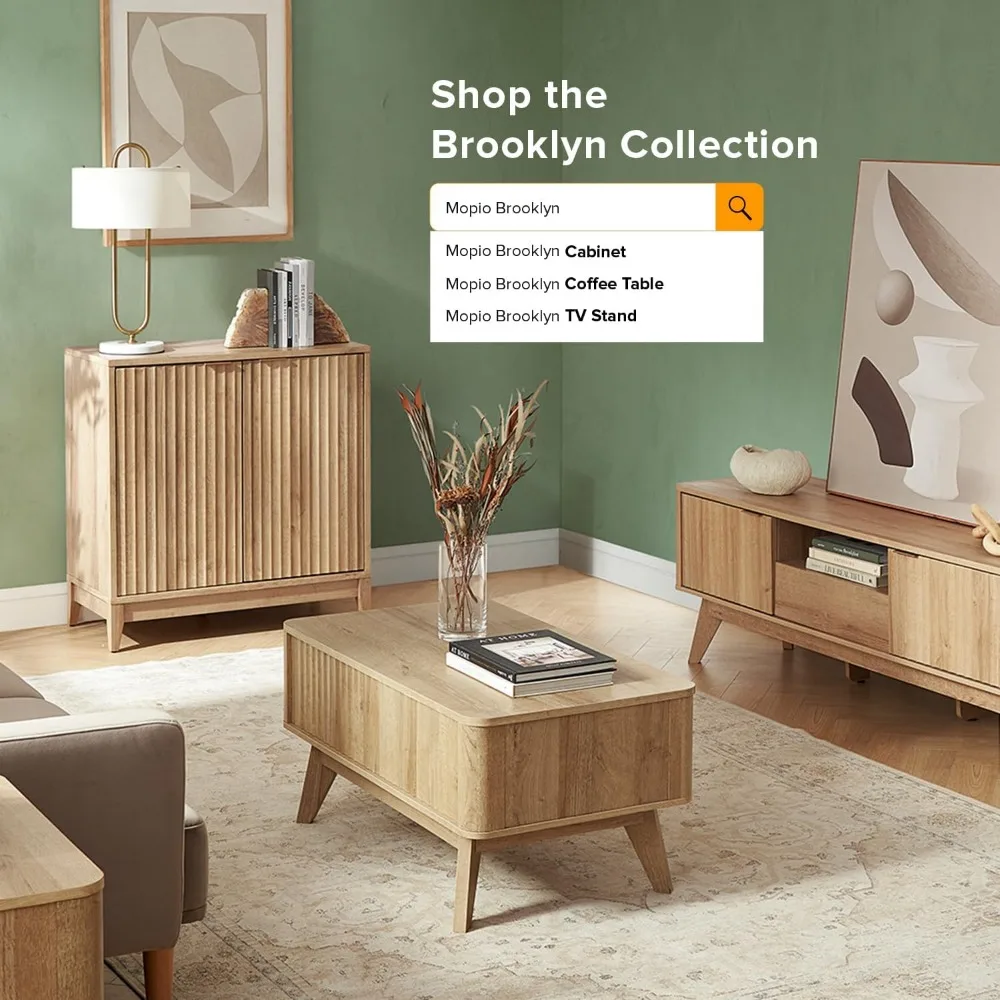
Console Tables with Open Shelving: Sophisticated Entryway Foundations
Console tables featuring open shelving beneath their surfaces offer an elegant solution for entryways that balances refined aesthetics with practical storage. Unlike wall-mounted options, these freestanding pieces require no installation, making them ideal for renters or those who prefer flexibility in their home design.
The dual-level functionality of console tables creates natural organization zones—the tabletop provides a landing surface for immediate needs like keys, mail, and personal items, while the open shelving below accommodates larger objects such as bags, baskets, or decorative elements. This arrangement keeps essentials visible yet orderly.
Modern console designs feature clean lines, mixed materials, and thoughtful proportions. Popular contemporary styles include waterfall edges in light woods, glass tops with metal frames, or monochromatic designs with interesting textural elements. The most functional entryway consoles typically measure 28-32 inches (71-81 cm) in height and 10-15 inches (25-38 cm) in depth—substantial enough for practical use without protruding too far into walkways.
When selecting a console table with open shelving, consider its relationship to your space’s traffic patterns. Ideally, it should be positioned along a wall that doesn’t interfere with the natural path through your entryway. For smaller homes, space-saving entry benches for small homes might offer a more compact alternative while still providing both surface area and open storage.
Leaning Ladder Shelves: Modern Casual Entryway Storage
Leaning ladder shelves bring a distinctive architectural element to entryways while providing practical tiered storage. Their angled design creates natural visual interest, drawing the eye upward and adding height to the space. The defining characteristic of these units—their lean against the wall rather than full attachment—makes them particularly appealing for renters and those who prefer easily movable furniture.
What makes ladder shelving especially suited to modern entryways is the graduated depth of the shelves, with wider bottom shelves tapering to narrower top shelves. This design naturally encourages logical organization: larger items below, smaller items above.
Styling Tips for Ladder Shelves:
- Place larger baskets or storage containers on bottom shelves for bulky items
- Use middle shelves for medium-sized decorative objects and frequently used items
- Reserve top shelves for lightweight decorative items and smaller display pieces
- Balance practical storage with visual appeal by incorporating plants, art, or decorative objects
Most ladder shelves require about 12-18 inches (30-46 cm) of floor depth and minimal wall attachment (often just a safety strap). This modest footprint makes them appropriate even for smaller entryways where floor space is limited.
Materials commonly seen in contemporary ladder shelves include light oak, walnut, matte black metal, or combinations of wood and metal. The inherently casual nature of ladder shelving makes it a perfect complement to modern-casual, Scandinavian, or contemporary design styles.
For compact living spaces where every square inch matters, pairing ladder shelving with modern storage benches for small spaces creates a comprehensive entryway solution that maximizes both vertical and horizontal storage opportunities.
Built-In Open Niches: Seamless Modern Entryway Integration
Built-in open niches represent the most architecturally integrated approach to entryway shelving, creating a sophisticated, custom look that appears to be part of the home’s original design. These recessed shelving areas offer a flush profile that doesn’t project into the walkway—particularly valuable in narrow passages where every inch counts.
The sleek, streamlined appearance of built-in niches aligns perfectly with modern design sensibilities that favor clean lines and uncluttered spaces. Beyond their aesthetic appeal, these permanent fixtures offer substantial customization potential through creative design choices:
- Contrasting back wall colors that make displayed items pop
- Integrated LED lighting to highlight objects and enhance ambiance
- Varied niche sizes to accommodate different items and create visual rhythm
- Material insets like wood, tile, or textured surfaces for added dimension
Typical built-in niches for entryways feature depths of 10-12 inches (25-30 cm)—sufficient for most everyday items while maintaining a slim profile. Wider niches can incorporate bench seating or shoe storage, while narrower versions work well for mail sorting, key storage, or purely decorative displays.
The primary consideration with built-in niches is their permanence and construction requirements. Installation typically involves wall framing modifications, drywall work, and finishing—making them a more substantial investment than freestanding or simple wall-mounted options. However, this investment pays dividends in creating a high-end, cohesive look that enhances both daily functionality and potential resale value.
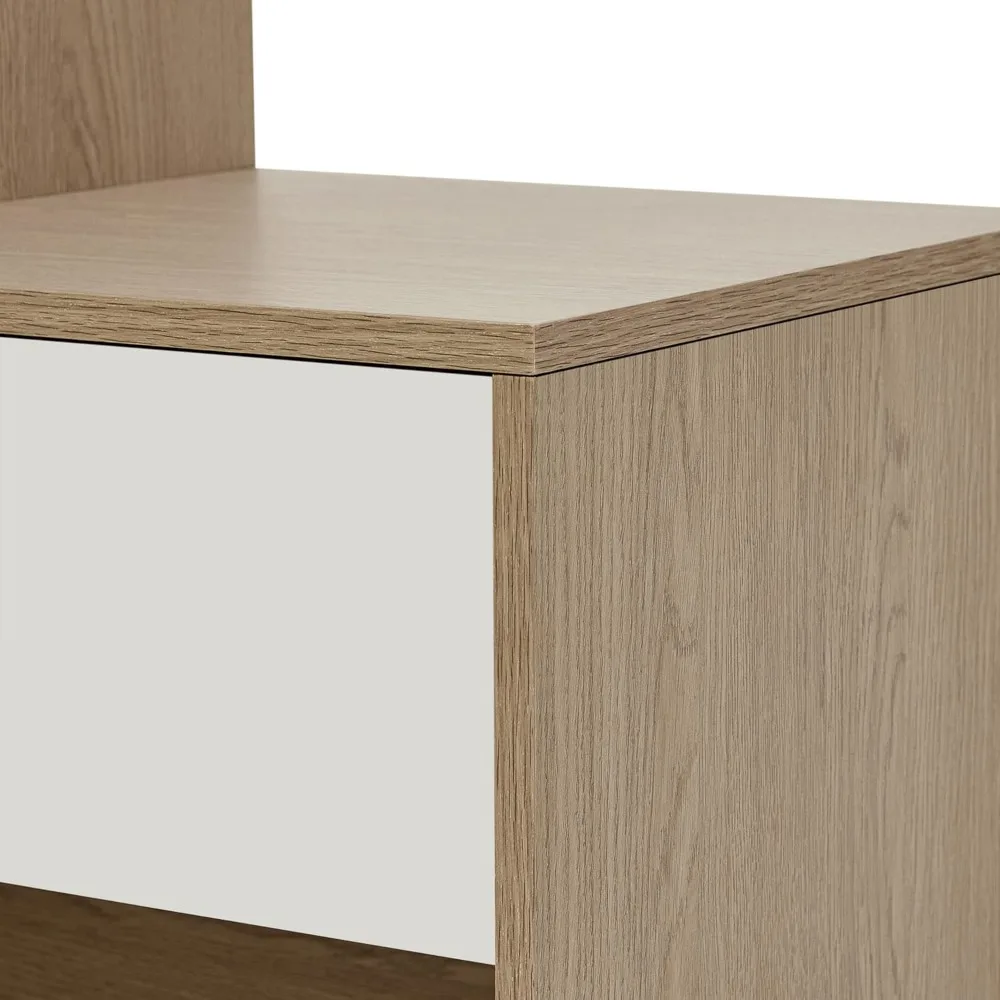
Industrial-Modern Entryway Shelving: Raw Yet Refined
Industrial-modern shelving brings character and visual interest to entryways through distinctive material combinations and structural elements. This style harmoniously blends utilitarian designs with refined details, creating pieces that feel simultaneously rugged and sophisticated.
The defining characteristic of industrial-modern shelving is its authentic material expression—celebrating rather than concealing structural components. Popular combinations include black metal pipes paired with reclaimed wood planks, aged steel frames supporting concrete shelves, or perforated metal sheets coupled with solid wood elements.
This shelving style creates particular impact in spaces with complementary architectural features like exposed brick, concrete floors, or visible ductwork. However, industrial shelving can also provide compelling contrast in more conventional spaces, adding texture and visual weight to neutral environments.
The substantial nature of industrial shelving offers practical advantages for entryways—these pieces typically support greater weight than lighter-looking alternatives, making them ideal for storing heavier items like books, bags, or substantial decorative objects. Their robust construction also ensures longevity in high-traffic areas.
To prevent industrial shelving from feeling too harsh, balance metal elements with natural materials, incorporate softer textiles nearby, or display organic shapes that offset the geometric rigidity. Color temperature also plays a role—warm wood tones help temper cool metal finishes.
For a complete entryway solution with industrial character, pair your shelving with modern entryway benches featuring similar material combinations and design language.
Geometric & Asymmetrical Shelving: Artistic Entryway Statements
Geometric and asymmetrical shelving transforms entryway storage from purely functional to genuinely artistic. These distinctive designs feature non-standard shapes, unexpected arrangements, and creative forms that serve as architectural focal points while providing practical organization.
Moving beyond conventional rectangular shelving, geometric options incorporate hexagons, triangles, diamonds, or irregular polygons. Asymmetrical designs play with unconventional arrangements, varied shelf depths, or intentionally offset components. Both approaches create visual energy and interest that standard shelving simply cannot match.
What makes these statement pieces particularly appropriate for entryways is their ability to establish a design-forward first impression of your home. They signal creativity and attention to detail from the moment someone steps through your door. Despite their artistic nature, these shelves can be highly functional when thoughtfully styled:
- Use larger compartments for practical storage baskets or boxes
- Reserve eye-level sections for decorative objects or personal treasures
- Place frequently accessed items in easily reachable sections
- Create balance through a mix of functional storage and decorative displays
Material choices for contemporary geometric shelving often include matte-finished woods, powder-coated metals in bold colors, or combinations of materials that emphasize the visual contrast between segments. Installation considerations become particularly important with unusual shapes—ensure proper wall anchoring and weight distribution for safety and stability.
For entryways with limited square footage, pairing geometric shelving with best small benches for entryways creates a functional yet stylistically cohesive entrance that maximizes both horizontal and vertical space.
Selecting the Perfect Modern Open Shelving: Key Considerations
Choosing the ideal open shelving for your entryway requires thoughtful assessment of several key factors to ensure both aesthetic harmony and practical functionality.
Space Assessment
Begin by measuring your available wall area, noting dimensions and any architectural features that might impact installation. Consider not just the wall space but the three-dimensional area—projecting shelves typically extend 8-12 inches (20-30 cm) from the wall, which must be accounted for in traffic patterns. Ceiling height also influences appropriate shelf positioning, with eye-level placement (approximately 60-65 inches/152-165 cm from the floor) being ideal for frequently used items.
Material Selection
Entryway shelving endures significant wear and varied conditions, making material durability essential:
- Solid woods (oak, maple, walnut) offer warmth and durability but may show wear over time
- Metal shelving provides industrial appeal and exceptional strength but can feel cold without softening elements
- Engineered wood products offer consistent appearance and good value but vary widely in quality
- Glass shelving creates a light, elegant look but requires more maintenance and careful loading
Installation Requirements
Different shelving types demand varying installation approaches. Floating shelves require secure anchoring into wall studs or using appropriate heavy-duty anchors. Modular systems may need wall attachment points for stability. Built-ins involve more extensive construction consideration. Always assess your wall type (drywall, plaster, brick) before selecting a shelving system, as this significantly impacts installation methods and hardware requirements.
Weight Capacity
Evaluate what you’ll actually store on your shelves to determine necessary weight capacity. Decorative items and light daily essentials may only require shelves supporting 15-20 pounds (7-9 kg) per linear foot, while shelves holding books, storage bins, or heavier objects should support 30+ pounds (14+ kg) per foot. Always verify manufacturer specifications and never exceed recommended weight limits.
Budget Considerations
Open shelving options span a wide price range, from budget-friendly basic wall shelves starting around $30-50 to high-end custom built-ins costing thousands. Modular systems and quality freestanding pieces typically fall in the $100-500 range. Consider investing more in heavily used areas while exploring entryway hall tree options for all-in-one solutions that might offer better value than separate components.
Expert Styling Tips for Modern Entryway Shelving
Creating an entryway that balances style with functionality requires thoughtful curation of your open shelving. Follow these expert guidelines to achieve a look that’s both visually appealing and practical for daily use.
The “Less is More” Principle
Modern shelving looks its best when it isn’t overcrowded. Embrace negative space between objects to let individual pieces shine and maintain a clean aesthetic. As a general rule, leave at least 20-30% of shelf space empty to prevent a cluttered appearance. This restraint creates a more sophisticated, intentional look while making it easier to access frequently used items.
Visual Balance Techniques
- Create triangular arrangements with items of varying heights to guide the eye naturally
- Use the rule of three – grouping objects in odd numbers creates more visually pleasing compositions
- Mix textures (smooth, rough, soft) to add depth and interest within a consistent color palette
- Alternate dense and light objects to prevent any area from feeling too heavy or empty
Functional Styling Approaches
Blend practical needs with aesthetic considerations by incorporating beautiful yet useful items. Decorative boxes and baskets contain clutter while contributing to the overall design. Position frequently used items at easy-reach heights, while placing purely decorative pieces higher up. Consider the natural flow of your daily routine and place items accordingly—keys and mail near the door, seasonal accessories within easy reach.
Seasonal Rotation
Keep your entryway fresh and relevant by rotating select items seasonally. This might include swapping summer hats for winter scarves, changing decorative elements to reflect the season, or adjusting the color scheme through simple accessories. A rotation system prevents your shelving from feeling static while ensuring practical items remain accessible when needed.
Lighting Enhancements
Strategic lighting dramatically improves shelf displays. Consider adding:
* Small picture lights above particularly special display areas
* LED strip lighting under shelves to create depth and highlight objects below
* A table lamp on console shelving to provide both ambient light and style
Entryway Bench with Back, Modern Entryway Bench, Shoe Bench for Entryway
Price range: $463.13 through $474.44 Select options This product has multiple variants. The options may be chosen on the product pageShoe Storage Bench for Entryway
$459.02 Select options This product has multiple variants. The options may be chosen on the product pageEntryway Bench with Shelf Storage, Shoe Bench for Entryway, Shoe Storage Bench
$194.08 Select options This product has multiple variants. The options may be chosen on the product pageCorner Entryway Bench, Entryway Bench with Cushion, Modern Entryway Bench, Shoe Bench for Entryway
$476.34 Select options This product has multiple variants. The options may be chosen on the product pageBench with Hooks and Storage, Entryway Hall Tree, Mudroom Bench with Cubbies, Mudroom Bench with Shoe Storage
$818.38 Select options This product has multiple variants. The options may be chosen on the product pageModern Entryway Bench, Wood Entryway Bench, Wood Mudroom Bench
$497.69 Select options This product has multiple variants. The options may be chosen on the product page
Practical Organization: Keeping Entryway Open Shelving Functional
While aesthetics matter, the true test of successful entryway shelving is how well it functions in daily life. Implementing thoughtful organization systems ensures your beautiful shelving remains practical through everyday use.
Essential Item Categories for Entryway Shelving
- On-the-Go Essentials: Designate a specific spot for keys, wallets, and phones—ideally at eye level in a small catchall tray or hook system
- Mail and Papers: Use decorative letter sorters, folders, or boxes to contain paperwork and prevent counter clutter
- Seasonal Accessories: Allocate adjustable space for season-specific items like sunglasses, hats, gloves, or umbrellas
- Footwear: If incorporating shoe storage, limit displayed pairs and rotate based on weather and frequency of use
Decorative Containers That Conceal
The key to maintaining a clean look with open shelving is strategic use of containers that hide smaller items while contributing to your design scheme. Woven baskets add natural texture, metal bins bring contemporary edge, and decorative boxes in complementary colors create cohesion. Choose containers with appropriate proportions for your shelves—neither too tall (causing awkward reaches) nor too deep (creating hidden zones where items get lost).
Zone Creation for Different Users
For households with multiple members, create personalized zones within your shelving system. Assign specific shelves or containers to each person, using subtle visual cues like color-coding or labels that blend with your aesthetic. Lower sections work well for children’s items, while higher shelves can be reserved for adults or less frequently used objects.
For comprehensive entryway organization that includes footwear, consider integrating shoe storage benches for entryways that complement your shelving while providing seating and concealed storage.
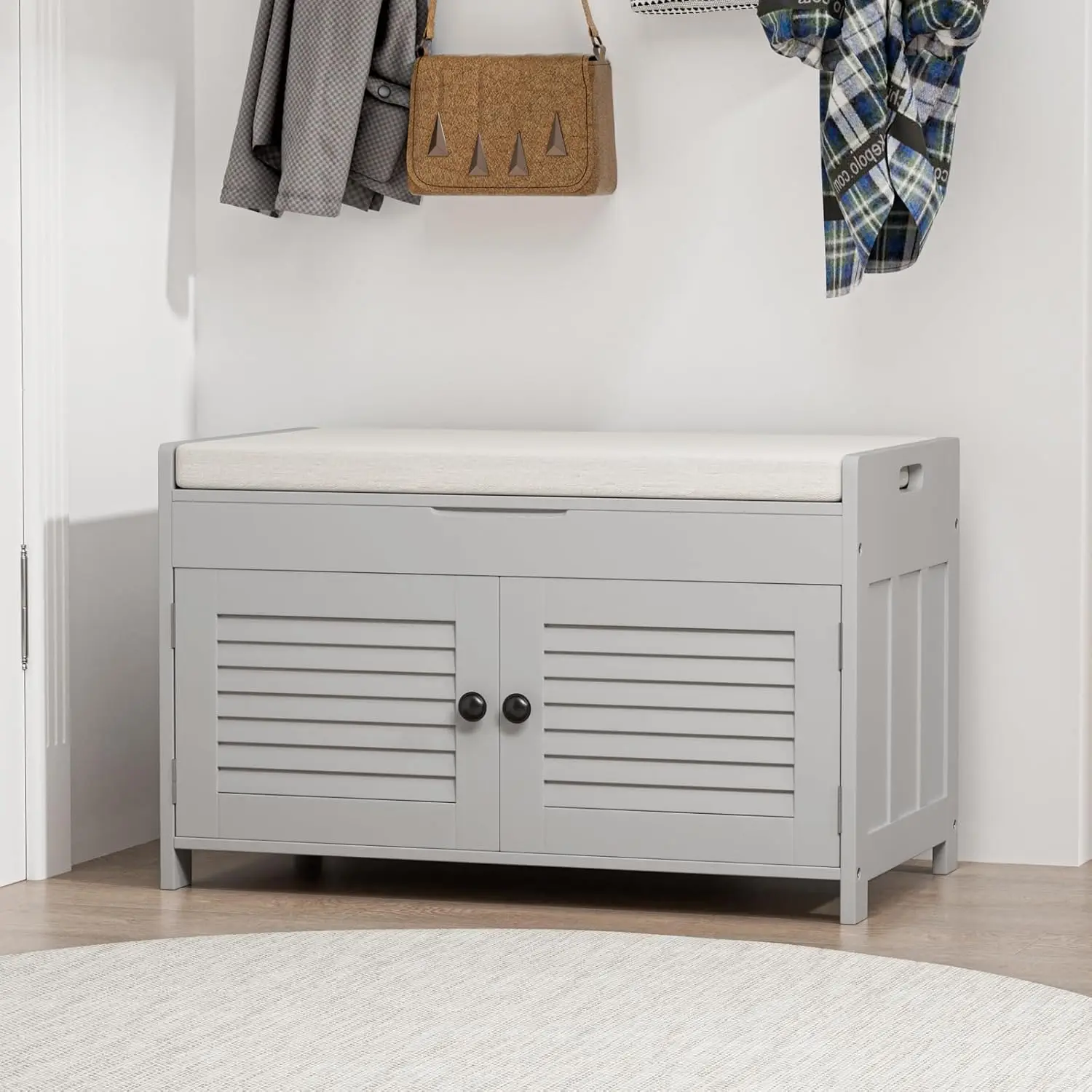
DIY Modern Entryway Shelving Projects: Where to Begin
Creating your own modern shelving allows for complete customization while potentially saving on costs. Even those with limited woodworking experience can tackle several beginner-friendly projects that deliver professional-looking results.
Simple DIY Shelf Projects
- Floating Wood Shelves: Create clean-lined floating shelves using solid wood planks (1×8 or 1×10) mounted on hidden bracket systems
- Bracket-and-Board Shelving: Combine minimalist metal brackets with finished wood boards for an industrial-modern look
- Box Shelves: Construct simple wooden boxes that can be mounted individually or grouped for geometric impact
Essential Tools and Skills
Basic DIY shelving projects typically require:
* Measuring tape and level
* Drill with various bits
* Stud finder
* Screwdriver set
* Saw (hand saw or circular saw)
* Sandpaper and finishing materials
The most important skills include accurate measuring, finding wall studs, and understanding appropriate anchoring techniques for your wall type. Most beginner projects can be completed for $50-150 depending on materials chosen.
Safety and Stability Considerations
Never compromise on proper wall attachment—ensure shelves are securely fastened to wall studs whenever possible, or use appropriate heavy-duty wall anchors rated for the expected weight. For floating shelves, select bracket systems designed to support your intended load. Always check weight ratings before placing items on DIY shelving, and periodically inspect for any signs of sagging or loose hardware.
Where to Shop: Finding Quality Modern Entryway Shelving
When searching for the perfect modern entryway shelving, knowing where to look and what to look for saves time and ensures quality results.
Retailer Types Specializing in Modern Storage
- Contemporary furniture stores offering curated selections of on-trend designs
- Specialty storage retailers focusing exclusively on organizational products
- Modern home décor shops featuring stylish yet functional pieces
- Custom cabinetry companies for built-in options tailored to exact specifications
- Handmade marketplaces for unique, artisan-crafted shelving with character
Effective Online Search Terms
To find exactly what you’re looking for online, use specific search phrases like:
* “Floating entryway shelves modern”
* “Industrial wall shelving metal and wood”
* “Geometric wall storage system”
* “Modular entryway organization”
* “Minimalist open shelving for small spaces”
Key Product Specifications
When evaluating potential purchases, pay particular attention to:
* Precise dimensions (width, depth, height, and shelf thickness)
* Weight capacity per shelf
* Material composition and finish details
* Installation requirements and included hardware
* Assembly complexity for ready-to-assemble options
Quality modern shelving typically ranges from $75-200 for basic wall-mounted options, $150-400 for substantial freestanding pieces, and $500+ for premium modular systems or custom built-ins.
Maintaining Your Modern Entryway Shelving: Care Tips
Proper maintenance ensures your entryway shelving remains beautiful and functional for years to come.
Material-Specific Cleaning Methods
- Wood shelving: Dust regularly with a soft cloth and clean with gentle wood cleaner quarterly. Avoid excessive moisture and direct sunlight, which can cause warping or fading.
- Metal components: Wipe with a slightly damp microfiber cloth and dry immediately to prevent water spots or potential corrosion. Use metal polish sparingly for brushed or matte finishes.
- Glass shelves: Clean with non-ammonia glass cleaner and lint-free cloths to prevent streaking. Inspect regularly for chips or cracks that could compromise structural integrity.
Routine Stability Maintenance
Perform quarterly checks of all mounting hardware, tightening any loose screws or brackets. For freestanding pieces, verify they remain level and adjust as needed. If shelves begin to show signs of sagging, redistribute weight or consider reinforcement options appropriate to your specific shelving type.
Daily Habits for Lasting Organization
Implement a simple “one in, one out” policy—when adding new items to your entryway shelving, remove something else to maintain balance. Spend just 2-3 minutes each evening returning items to their designated spots, preventing gradual disorganization. This minimal daily maintenance prevents the need for major reorganization projects later.
Frequently Asked Questions About Modern Entryway Shelving
What’s the ideal height for installing entryway shelves?
For maximum functionality, install your main entryway shelving at eye level, typically 60-65 inches (152-165 cm) from the floor for average-height adults. Hook systems work best at 48-60 inches (122-152 cm), while lower shelving for shoes should be positioned 12-18 inches (30-46 cm) from the floor. For homes with children, include some accessible storage at their height level—typically 36-42 inches (91-107 cm) from the floor.
How can I prevent entryway shelving from becoming cluttered?
Implement a regular rotation system, removing seasonal items when not needed. Establish a “one in, one out” rule for new acquisitions. Use attractive containers to group similar small items, and schedule weekly five-minute decluttering sessions. Most importantly, ensure every family member understands where items belong and participates in maintaining the system.
What materials work best for entryway shelving in homes with children or pets?
For households with young children or active pets, choose durable, easy-to-clean materials like solid hardwoods, metal, or high-quality laminates. Avoid glass shelving or delicate finishes that may show damage easily. Round or softened edges provide additional safety, while sturdy construction prevents tipping hazards. Consider placing more delicate or valuable items on higher shelves beyond reach.
How much weight can typical floating shelves support?
Standard decorative floating shelves typically support 15-25 pounds (7-11 kg) per linear foot when properly installed into studs. Heavier-duty floating shelf systems with metal internal brackets can support 40-50 pounds (18-23 kg) per linear foot. Always check manufacturer specifications and ensure proper installation following weight-bearing guidelines. When in doubt, distribute weight evenly and place heavier items closer to mounting points.

